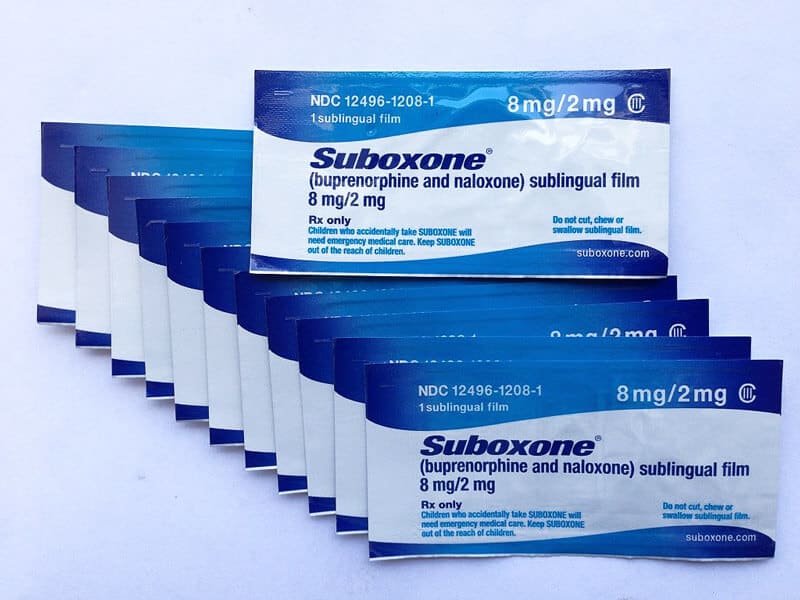What is Suboxone?
Suboxone is a controlled substance that contains naloxone and buprenorphine. It is primarily used to treat opiate addiction by slowly weaning the user off of the narcotic. Naloxone blocks the addictive effects of opioid medications, such as the feelings of well-being and pain relief that can lead to abuse of opiates, while buprenorphine is a synthetic opioid medication itself. There are also other various medical uses for Suboxone.
We see many opiate addicts switch over to Suboxone either legally or illegally. Often the opiate addict gets a prescription for Suboxone, continues to abuse opiates and sells the Suboxone. “Subs,” as Suboxone is often called on the street, is more commonly abused for this purpose than to get high.
Suboxone contains the drug Buprenorphine along with Naloxone. It is sold as Suboxone – a sublingual film contains an opioid that can cause physical dependence with chronic use. In drug testing panels, we look for Buprenorphine to determine use of Suboxone.

Suboxone is one of the opioid drugs often called an opioid antagonist. Many previous heroin or oxycodone users become addicted to Suboxone.
Order a Suboxone Drug Test.
Uses of Suboxone
When it comes to treating individuals with an opioid addiction, such as oxycodone or heroin, Suboxone is one of the most commonly used and effective treatment medication options since its potential for abuse is fairly low. It is used in both short term and long term opioid replacement therapy, as well as for initial detoxification. It also has investigational uses such as in clinical trials for depression and cocaine dependence.
Effects of Suboxon
Suboxone has the potential to produce a euphoric effect, or an opioid “high”, if it is taken in ways other than prescribed, or in higher dosages. This can increase potential abuse, but because of the naloxone properties in Suboxone, the potential for abuse still remains low.
Some negative side effects of Suboxone that may require immediate medical attention include: slurred speech, confusion and blurred vision; a light-headed feeling like you might pass out; weak or shallow breathing; extreme drowsiness or weakness; nausea or vomiting; upper stomach pain; allergic reactions; and withdrawal symptoms.
Symptoms of Suboxone
There are many potential negative symptoms of Suboxone. Immediate medical care should be sought is any of these serious symptoms are present. Symptoms of an allergic reaction to Suboxone may include swelling of the tongue, throat, lips, or face; difficulty breathing; and hives. Withdrawal symptoms include watery eyes, runny nose, vomiting, diarrhea, muscle pain, hot and cold flashes, and shaking or shivering.
Some other common symptoms can include itching, headaches or other pains; constipation; swelling in the legs or arms; tongue pain; numbness or redness inside the mouth; dark urine; clay-colored stools; loss of appetite; increased sweating; jaundice; and sleeping problems like insomnia.
Testing for Suboxone
Buprenorphine, the main active ingredient in Suboxone, can be detected in a hair, urine, or blood sample using GM/MS (gas chromatography/mass spectrometry), or by enzyme-linked immunosorbent assay in urine. The detection period for Suboxone varies. Suboxone, which appears as buprenorphine in a drug screening, can be detected within 2 to 5 hours after ingestion. It is not usually detectable 2 to 3 days after ingestion, depending on the dose, with some cases even showing it detectable up to 4 days after administration, due to slow onset and a long half-life.
Although the components of Suboxone, naloxone and buprenorphine, will not appear on most standard opiate drug tests, there are additional panels and specific drug tests, such as a 12 panel drug test, that can be used to detect those active ingredients. Suboxone-specific tests are usually ordered in a clinical setting when there are suspicions of low absorption, which can interfere with the effectiveness of the treatment, or non-dosing, possibly due to the individual selling their medication. Also, if there is suspicion of benzodiazepine abuse, a Suboxone test may be called for since the combination with Suboxone can present potentially lethal risks. Usually, if someone is enrolled in an OTP (opioid treatment program), the attending physician will order comprehensive panels that include Suboxone for a variety of reasons.
When ordering a urine drug screen or hair follicle test for Suboxone, make sure you clearly request that you need to detect Suboxone. This is a special panel test for Buprenorphine that will detect Suboxone.
Warning Signs
One of the most dangerous warning signs and symptom of Suboxone is respiratory suppression. Regardless of whether they are synthetic or not, any opiate will have this effect, which is how an opiate overdose can kill a person. Operating hazardous machinery or even driving a car can be dangerous for a person taking Suboxone, which is exactly why employers should keep an eye on anyone displaying the warning signs.
Other warning signs include itching, cold and flu symptoms, nausea, problems sleeping, emotional highs and lows, yellowing of the skin or eyes (jaundice), loss of appetite, and other withdrawal type symptoms.






